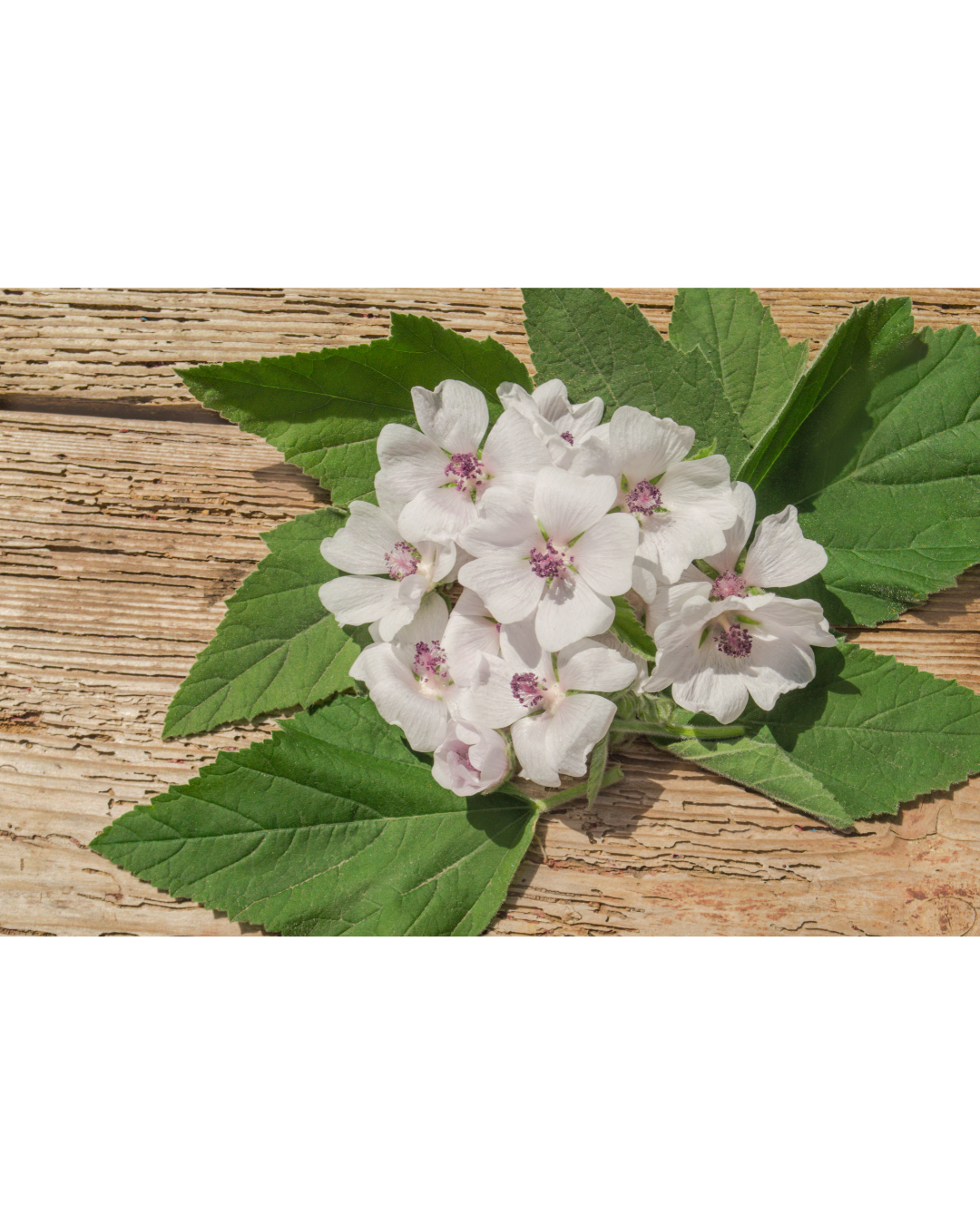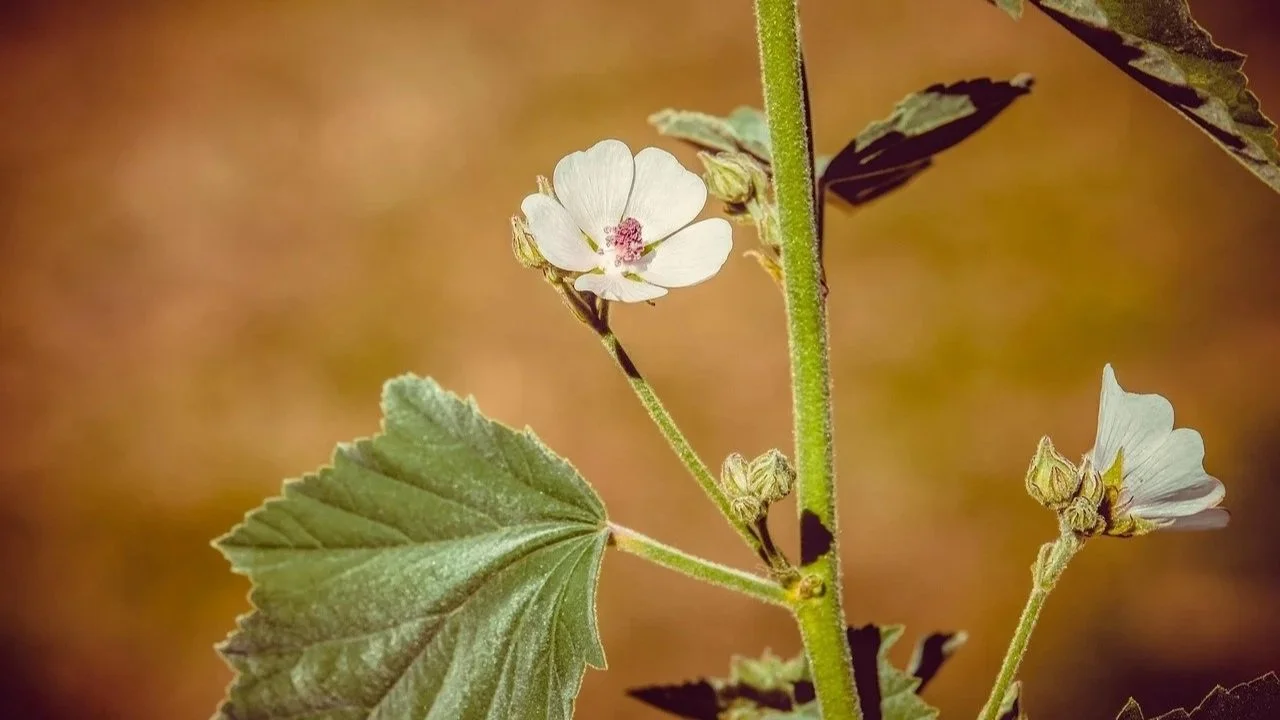Marshmallow - Althaea officinalis
Marshmallow
Latin Name: Althaea officinalis
Ayurvedic Name: Khatmi
Other Common Names: Cheeses, Mallards, Mallow, Mauls, Mortification Root, Schloss Teai, Sweet weed, White mallow, Wymote
Family: Malvaceae
Medicinal Parts: Leaves, roots
Taste: Salty and bland with a touch of sweetness
Prefer to listen instead of read? Check out the podcast episode linked above! Also available on Spotify, Apple Music, and YouTube!
Parts of the Plant
-
Light pink to white
Darker pink towards center
Five petals
Five fuzzy sepals
Purple pollen
-
Medium green
Symmetrical
Lobes on each side of the leaf
Serrated edges
Covered in a fine fuzz
Pronounced veins on the underside of the leaf
-
Woody looking
Almost looks like multiple small branches stuck together
-
Growth Pattern - The flowers grow up and out from the joints of the plant with a leaf
Blooming - The stalk will have multiple clusters of teardrop shaped blooms that will bloom in succession
Height - Marshmallow can be up to, or even more than, five feet tallItem description
Actions, Affinities, Energies, and Notable Constituents
Actions - Anti-inflammatory, antimicrobial, demulcent, diuretic, emollient, expectorant, nutritive, vulnerary
Affinities - Digestive, respiratory, and urinary systems - particularly mucous membranes
Energetics - Cold, moist, relaxant
Constituents - Arabinogalactans, asparagine, flavonoids, mucilage (leaf 6 –16%, root 5 –35%), pectin (root 11 –35%), phenolic acids
Medicinal Applications
Moistening for dehydrated bodies, especially those that cannot hold onto water
Brings water to the tissues of the body, both internally and externally, with a particular affinity for the digestive system
Hydrating for dry skin, particularly for skin affected by external factors such as dryness and/cracking from salt or sunlight exposure
Moistening and expectorant qualities also applicable for respiratory spasms and dry coughs
Soothing and healing to inflamed and irritated tissues, whether in the GI tract, the skin, or elsewhere
Soothing for stomach troubles, including heartburn, constipation, GERD, general stomach aches, stomach and intestinal ulcers, diverticulitis, etc.
As an adjunct to diet modifications, soothing for allergic reactions in the intestines, such as Celiac disease
Soothing demulcent qualities act on the urinary system, useful for cystitis and urinary tract infections
The medicinal use of the Marshmallow plant can be traced back through written records to as early as the 9th century BCE!
Historical Medicinal Applications
Ancient Greek - Wound healing, sore throats, bee sting balm, sore tooth balm
Arab - Anti-inflammatory
Roman - Laxative, insomnia, burns
Fun Recipes
Old Fashioned Marshmallows
The sweet, soft, and pillowy marshmallows that we know and love today didn’t always taste like they do now! If you’re curious to know how the O.G. marshmallows tasted, try out this fun, historical recipe!
Marshmallow Cold Infusion
If you’re dehydrated and you know it, clap your hands! 👏👏 The next time you expect to be out in the sun, try this soothing marshmallow cold infusion to quench your thirst and satisfy your body. One sip will have you saying: Give me more! 🍵
Marshmallow Lozenges
Have you ever had a cough that just doesn’t want to go away? Tickle that itch in your throat with a tasty medicinal treat: marshmallow lozenges!








